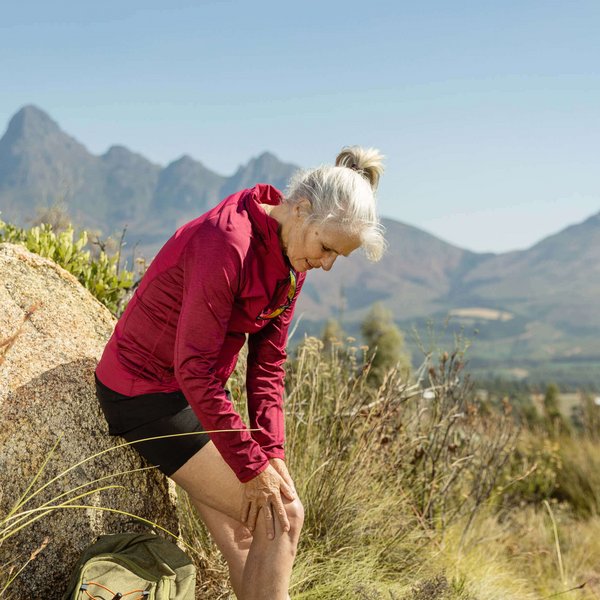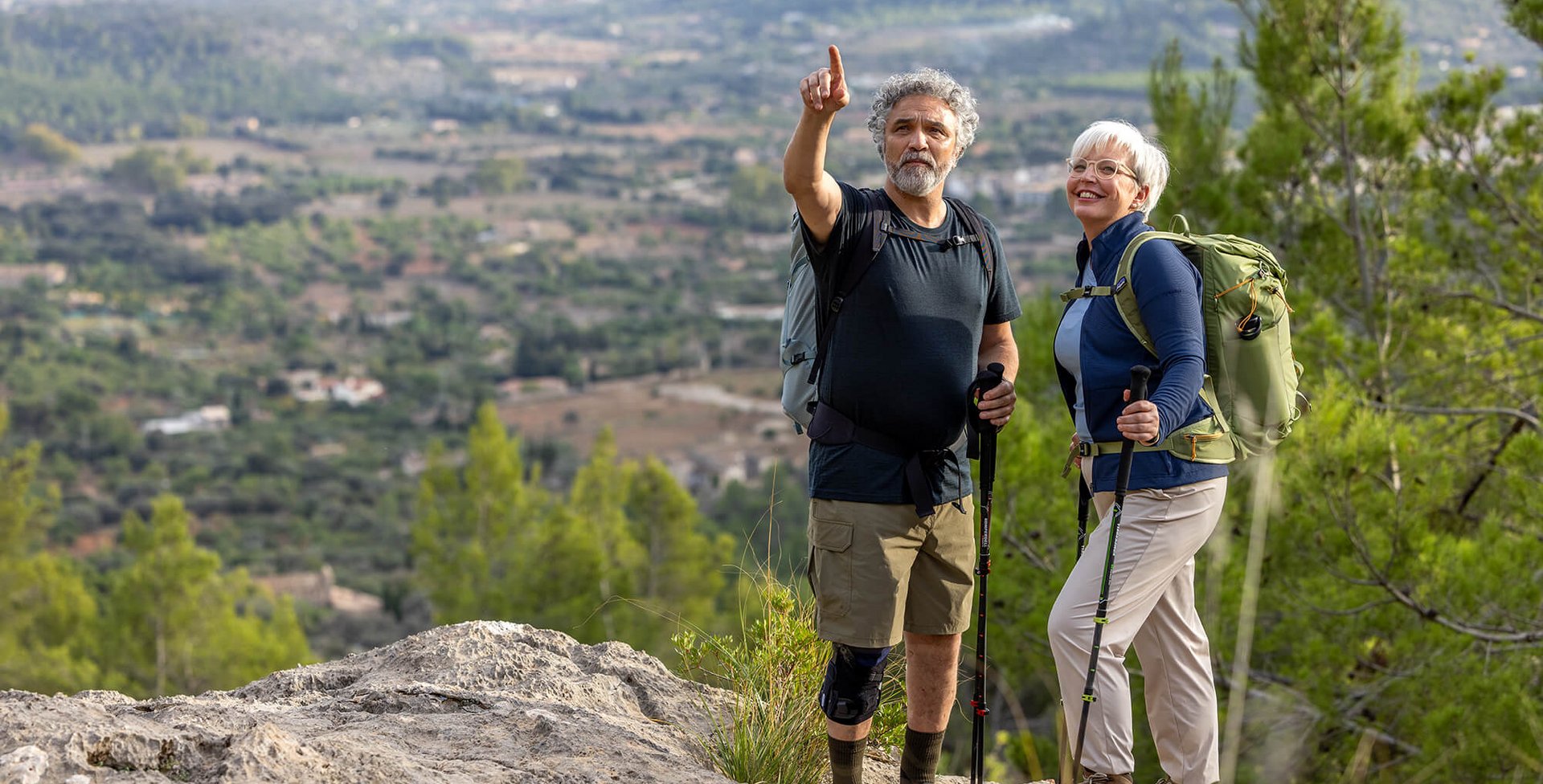
Osteoarthritis
Bringing osteoarthritis to its knees
Osteoarthritis of the knee: how to recognize symptoms, start treatment and improve your quality of life
In our guide on gonarthrosis, you will learn everything important you need to know about this degenerative knee condition. Discover practical tips and proven strategies to actively combat pain and improve your quality of life.
Your knees hurt and you’re wondering if you’re suffering from osteoarthritis?
Then our osteoarthritis self-test can provide you with an initial assessment. Plus, you will find out everything you need to know about the symptoms and causes of osteoarthritis of the knee.
Have you recently been diagnosed with osteoarthritis of the knee?
Find guidance on our advice portal, including non-surgical treatment options, other patient journeys and information about our products for osteoarthritis of the knee.
What is osteoarthritis of the knee?
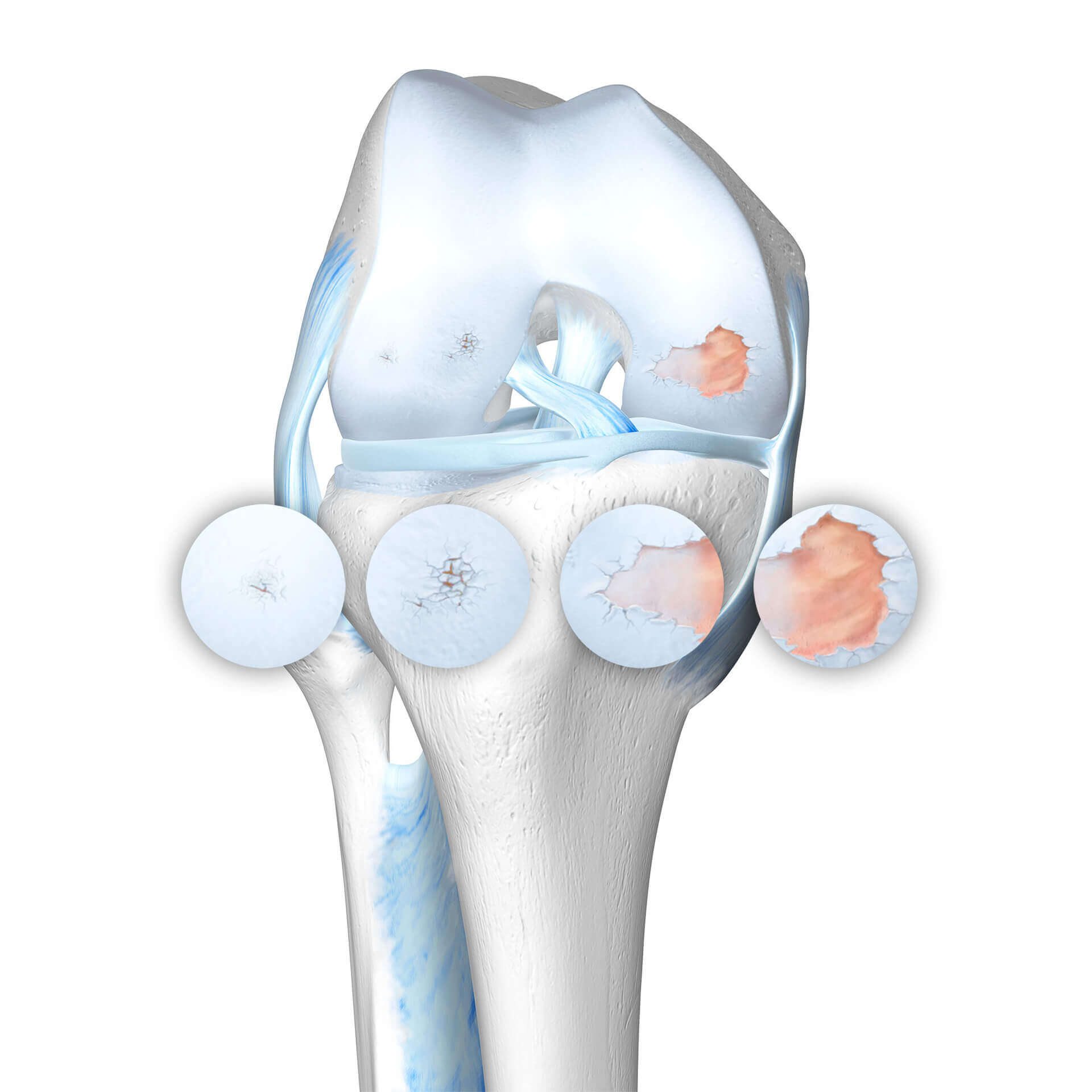
The articular surfaces of the knee joint are covered by a layer of cartilage. When this layer gradually starts to wear, the diagnosis will be: osteoarthritis of the knee joint. Physicians also describe this joint wear as gonarthrosis. It is one of the most common conditions caused by joint wear. Owing to the damaged cartilage in the knee, the pressure on the bone underneath increases. To compensate, the articular surface gets bigger and bony points develop on the edge. This makes the knee joint less mobile, and the cartilage damage increases. The bones move closer together, and the joint space becomes narrower. In the later stages, when the bones lie on top of each other almost without any protection, and the joint space has disappeared completely, the knee will become immobile and stiff.
Even though on average 20 to 40 per cent of those aged 60 and over are affected by osteoarthritis of the knee, cartilage damage in the knee is not purely an age-related condition. The patient’s own lifestyle also has an effect on the extent of the problems caused by osteoarthritis of the knee. A healthy and active lifestyle not only alleviates pain, it can also delay surgery and prevent the need for total knee replacement.
What causes osteoarthritis of the knee?
In cases of “primary osteoarthritis”, no causes of the condition can be found. Scientists assume there is a hereditary predisposition. However, the exact reasons have not been sufficiently investigated.
When external factors cause cartilage wear in the knee, this is known as “secondary osteoarthritis”. If the knee is subjected to a lot of strain or inappropriate mechanical stress, the result can be osteoarthritis. That’s why osteoarthritis of the knee is more common in occupational groups with a lot of strain on the knee or athletes. Obesity as well as a lack of exercise can also promote the development of osteoarthritis of the knee. A misalignment of the legs can cause one-sided wear. Knock knees, for example, lead to osteoarthritis of the outside of the knee (valgus osteoarthritis), and bandy legs result in osteoarthritis of the inside of the knee (varus osteoarthritis).
What are the symptoms of cartilage damage in the knee?
Common symptoms for osteoarthritis of the knee are:
- Knee pain when climbing the stairs and walking on uneven ground
- Problems are worse when carrying heavy objects
- Pain that is severe at the beginning of the activity, then subsides but gets worse if the strain continues
- Pain behind the kneecap after extended periods of sitting
- Increased sensitivity when the weather is cold or damp
- Crunching sounds when moving the affected knee
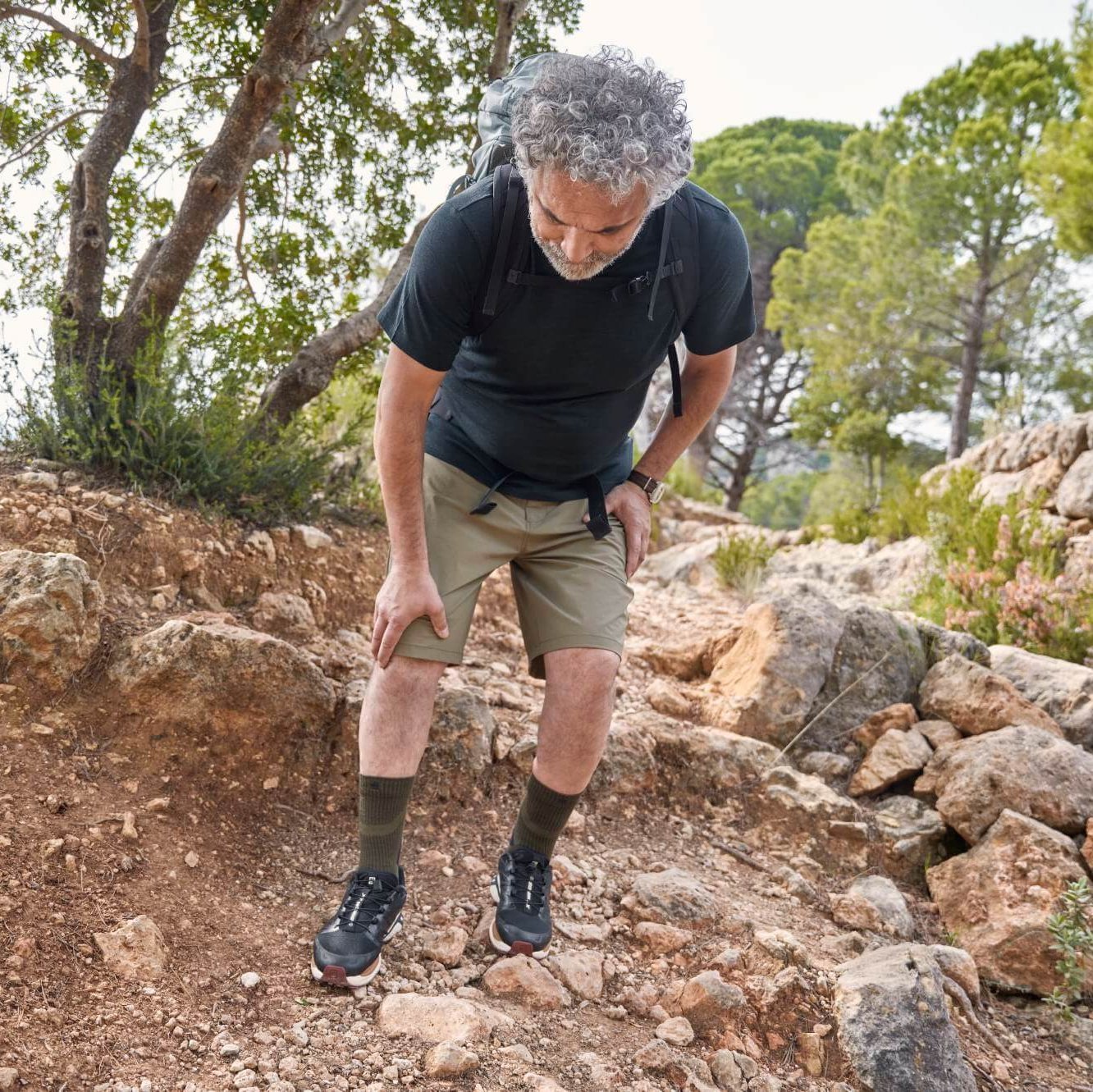
Osteoarthritis of the knee is a slowly progressing condition. That’s why those affected feel hardly any pain or restrictions at the beginning. Therefore, osteoarthritis of the knee often remains undetected for a long time. One of the first symptoms: after extended periods of rest, the knees will hurt and make cracking sounds during movement. Over time, every strain on the joint will cause severe pain. This is usually when those affected will visit the physician. Using X-ray imaging, the physician can check the distance between the articular surfaces as well as the characteristics of the joint surfaces and cartilage tissue.
Die Symptome verstärken sich im fortlaufenden Erkrankungsverlauf weiter und die Schmerzen treten häufiger auf. Das letzte Mittel ist eine Knieendoprothese (künstliches Kniegelenk).

Self-test: do you suffer from osteoarthritis of the knee?
If you’re not sure whether you suffer from osteoarthritis of the knee, our self-test can provide an initial assessment. You should, however, visit an experienced physician to get a more precise, reliable diagnosis.
What can be done about osteoarthritis of the knee?
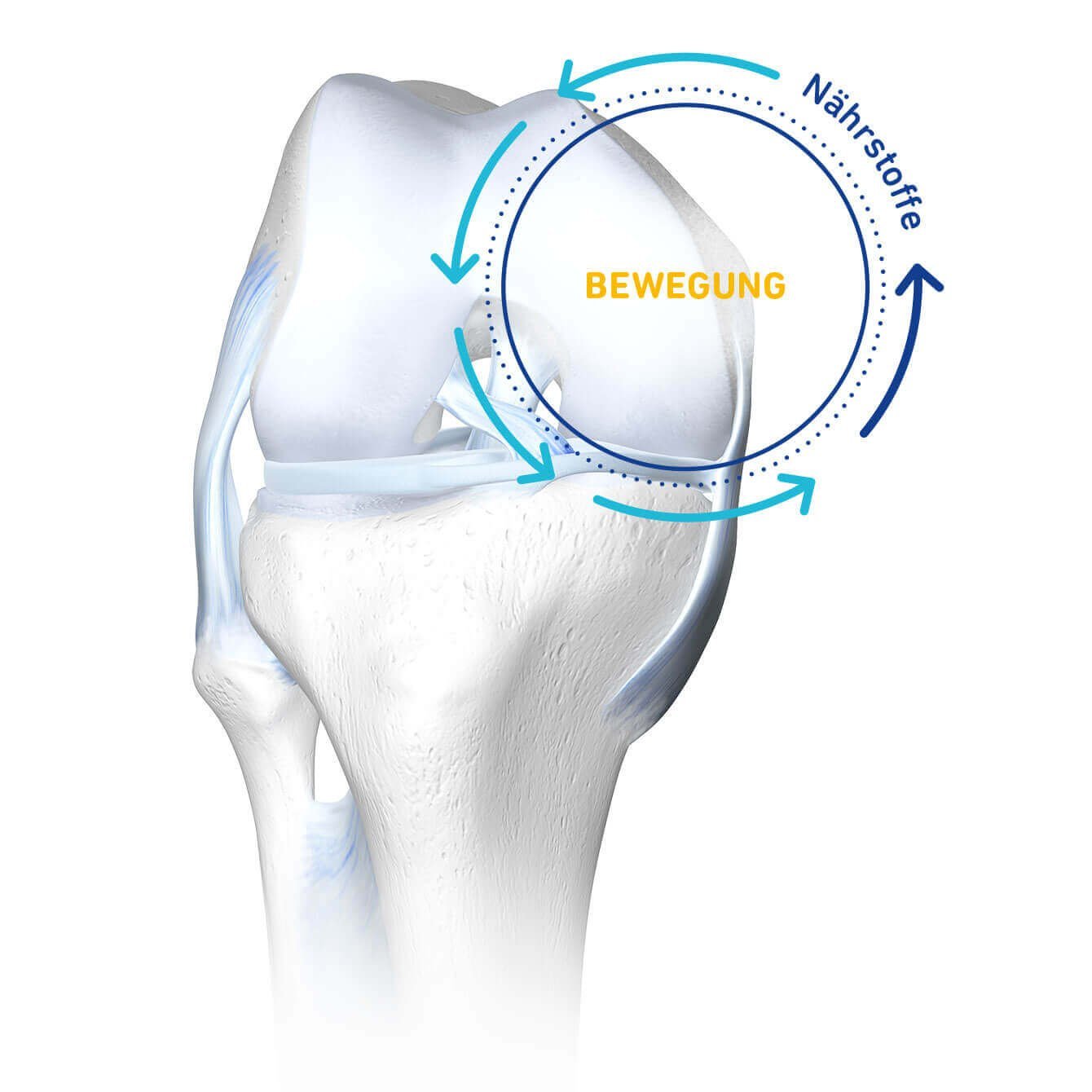
Existing cartilage damage cannot be reversed. The aim of treatment is therefore to delay the progression of the condition, to alleviate pain, and by doing so, to improve the quality of life for those affected. An important aspect of treatment is physiotherapy because movement is the proven method for pain reduction. However, many patients rest their knees because the pain increases with strain. How can they escape from this vicious circle? The answer is to wear a knee support or orthosis during the activity. This is based on the fact that supports or orthoses for osteoarthritis of the knee gently distribute the pressure on the joint and thus significantly reduce pain. An active and healthy lifestyle with the appropriate diet can delay surgery and prevent the need for knee replacement.
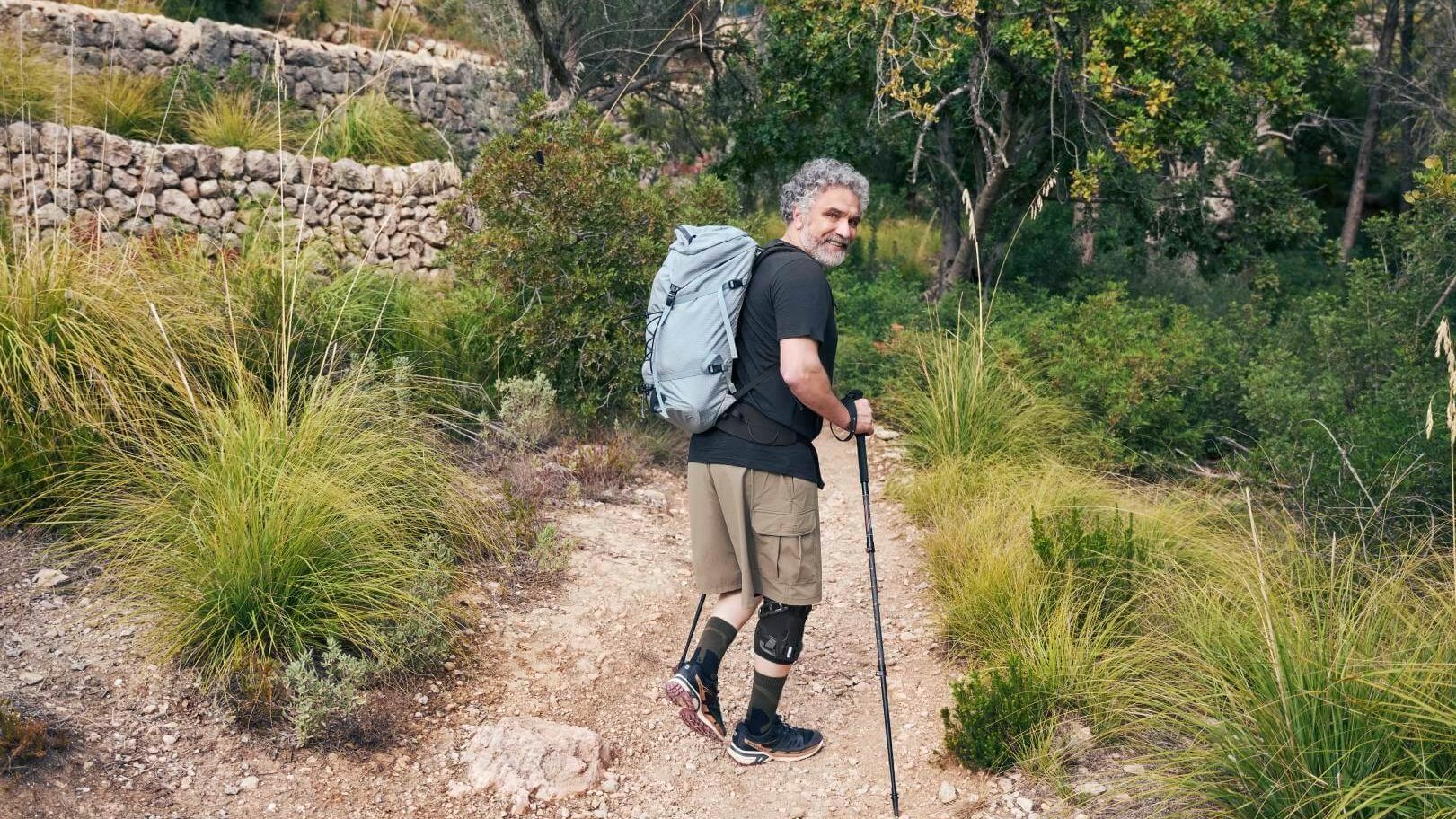
So far, medicine has not been able to reverse cartilage damage. That is why treatment is limited to conservative options. They aim at alleviating pain, increasing mobility and delaying the progression of osteoarthritis. An active and healthy lifestyle, paired with an appropiate diet, can delay surgery and prevent the need for knee replacement.
Therefore, patients can contribute a lot to slowing down the progression and alleviating symptoms. This includes:
- Reducing obesity
- Independent strength training
- Avoiding activities that subject the knee to strain (e.g. kneeling, carrying heavy loads)
- Low-impact exercise (e.g. going for a walk on even ground, specific knee exercises)
- Quark poultices or wraps for pain alleviation
Wearing supports and orthoses: they carefully distribute the load within the joint, alleviate pain and thus allow the development of relieving muscles by way of exercise.
Osteoarthritis of the knee – what can be done at diagnosis and beyond?
Whether you have only just been diagnosed with osteoarthritis of the knee or you have known about your condition for a while – visit our advice portal to find treatment options, patient journeys and information about our products. We will help you choose a suitable medical product and get your pain under control.
Find a retailer
Find a medical supply retailer near you for expert and personal advice about our products for osteoarthritis of the knee.
An in-depth look at osteoarthritis of the knee
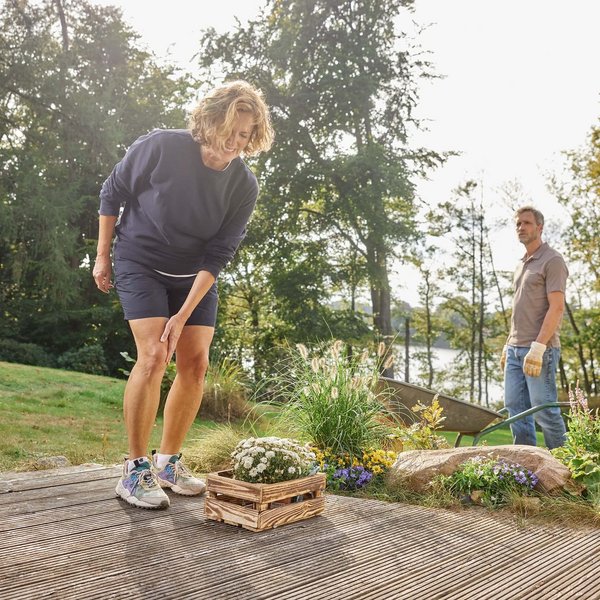
Osteoarthritis of the knee: what really helps
Card subtitle
A combination of several treatments helps with osteoarthritis of the knee. Medication, proper nutrition, exercise along with supports and orthoses.

Movement starts with a tap
Train whenever and wherever you want!
Our aids have a pain-relieving and stabilizing effect. To further support you in getting active, we have developed the therapy app. It shows you personalized exercises to help you get moving. The app also motivates you to improve your mobility and enhance your well-being.



